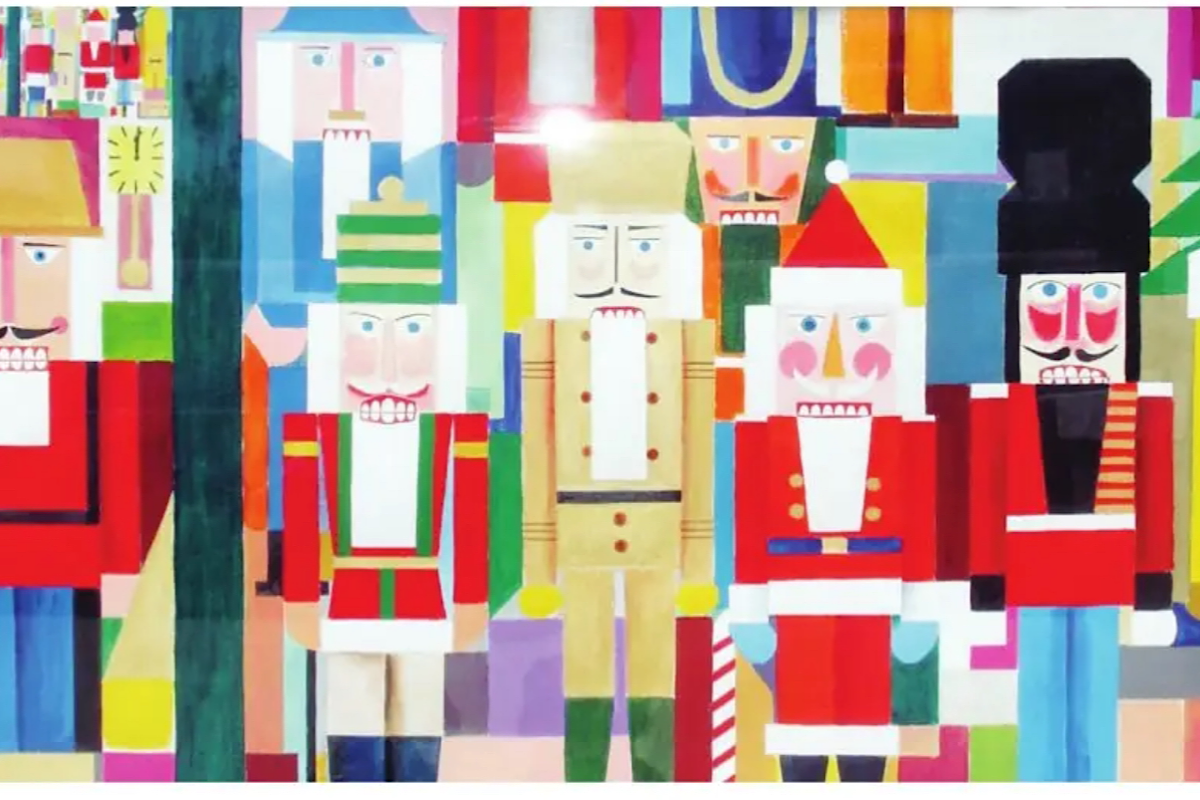We went to visit Munich, Germany almost thirty years ago and took a tour bus from Munich to see the Neuschwanstein castle in Bavaria. On the way, the bus made a stop at a gift shop to meet coffee and bathroom needs of passengers. What I vividly remember about that store are multiple racks on one wall full of nutcracker soldier figurines of all sizes in a variety of outfits and decorations. It was a striking sight that I will never forget.
I had seen such dolls in the US around Christmas time, but only a few in any given store and never in such a large elaborate display. I did not know of any connection between these toy soldiers and Christmas at the time but was totally captivated by them. I also did not know why Germans were more into them than Americans.
There were many reasons for my fascination. Of course, any soldier figure conveys an image of strength and power. However, these figures were not all dressed as look-alike soldiers in standard uniform. They had similar carved wooden faces, moustaches, large teeth and postures (standing straight at attention) but there was a wide variety of outfits; from that of a king to a policeman, a miner, a lumberjack, a bishop, a farmer, a fireman and even a Santa Claus.
The outfits were very colourful and even the headgears were different matching the professions. The heights of the dolls varied from about ten inches to several feet. They reminded me of the Maharaja in the old Air India logo, I decided to do a little research on the internet. Here are some key facts I gathered. The origin of these handcrafted figures indeed goes back to Germany.
They symbolize strength, resilience and determination, just what is needed to crack a tough nut. When the American soldiers stationed in Germany during World War II came home, many brought back these dolls as gifts for their loved ones. Gradually they became popular in the US. Until the middle of the twentieth century, these were functional, meaning one could crack nuts with them.
This functionality required that one used the legs of the doll as handles of the nutcracker and the cracking edges were hidden in the headgear. In recent decades, most of them have become decorative items. Although the connection of nutcracker soldiers to Christmas in the US is a relatively recent phenomenon, the history of nutcracker soldiers goes back to 1816 when the Prussian author E. T. A. Hoffman wrote a short story – a fantasy tale titled “The Nutcracker and the Mouse King” which tells the story of a little girl named Marie. Her godfather gave her a nutcracker as a Christmas gift. She befriended the nutcracker who came to life on Christmas eve.
They together fought the evil mouse king, and the little girl was taken to a wonderful magical world which was full of dolls. The famous Russian composer Pyotr Tchaikovsky adapted this story in his Nutcracker Ballet which was first staged in Moscow in 1892. The ballet is reportedly a much more cheerful version of the original story. The ballet got increasingly popular not only in Russia but throughout the world.
It was first staged outside Russia in the UK in 1934 and the complete ballet was performed in the US for the first time in 1944 in San Francisco. Selected instrumental sections of the ballet, called “suites” were performed before that, most notably in Disney’s Fantasia in 1940. This ballet has been performed hundreds of times throughout the US since the late 1960s. Watching this ballet has become a seasonal recreation, especially on Christmas eve.
American ballet companies generate 40 per cent of their annual revenue by staging nutcracker ballet. Just like jingle bells, candy cane, reindeer and “frosty the snowman”, nutcracker soldiers have become an indispensable part of Christmas decoration. They symbolize protection of the home against malevolent spirits during Christmas time. I have seen nutcracker figures several feet tall posted at the entrance of many homes standing like security guards. One Christmas, while I was visiting my daughter and her family, my grandkids organized their version of Nutcracker where all family members participated.
I played the role of the evil mouse king. I put on the large Mickey Mouse ears my grandkids had brought from a visit to Disney World. I never read the story but acted evil in my own way; this is a very fond Christmas memory for me. I was inspired enough by what I saw in Bavaria to do a Christmas painting with the nutcrackers. Perhaps I had a fantasy of seeing them come alive out of my painting at midnight on Christmas eve.
I wanted to use my inherent fascination with geometric patterns and bright Christmas colours of red and dark green. I am intrigued by the universal appeal of nutcracker soldiers and the feeling of happiness and safety they convey. Although I had done paintings of Christmas trees and Santa Claus with my daughter and later with my grandkids from children’s colouring books, I never did a Christmas painting with so much attention and the result gave me so much joy. A photo of the nutcracker painting is included here. I would like to wish every reader a merry and safe Christmas.
(The writer, a physicist who worked in industry and academia, is a Bengali settled in America.)












